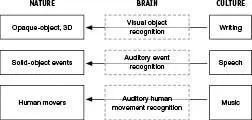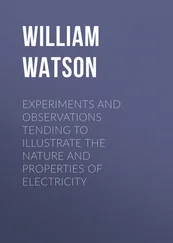Mark Changizi - Harnessed - How Language and Music Mimicked Nature and Transformed Ape to Man
Здесь есть возможность читать онлайн «Mark Changizi - Harnessed - How Language and Music Mimicked Nature and Transformed Ape to Man» весь текст электронной книги совершенно бесплатно (целиком полную версию без сокращений). В некоторых случаях можно слушать аудио, скачать через торрент в формате fb2 и присутствует краткое содержание. Год выпуска: 2011, Издательство: Perseus Books Group, Жанр: Старинная литература, на английском языке. Описание произведения, (предисловие) а так же отзывы посетителей доступны на портале библиотеки ЛибКат.
- Название:Harnessed: How Language and Music Mimicked Nature and Transformed Ape to Man
- Автор:
- Издательство:Perseus Books Group
- Жанр:
- Год:2011
- ISBN:нет данных
- Рейтинг книги:5 / 5. Голосов: 1
-
Избранное:Добавить в избранное
- Отзывы:
-
Ваша оценка:
- 100
- 1
- 2
- 3
- 4
- 5
Harnessed: How Language and Music Mimicked Nature and Transformed Ape to Man: краткое содержание, описание и аннотация
Предлагаем к чтению аннотацию, описание, краткое содержание или предисловие (зависит от того, что написал сам автор книги «Harnessed: How Language and Music Mimicked Nature and Transformed Ape to Man»). Если вы не нашли необходимую информацию о книге — напишите в комментариях, мы постараемся отыскать её.
Harnessed: How Language and Music Mimicked Nature and Transformed Ape to Man — читать онлайн бесплатно полную книгу (весь текст) целиком
Ниже представлен текст книги, разбитый по страницам. Система сохранения места последней прочитанной страницы, позволяет с удобством читать онлайн бесплатно книгу «Harnessed: How Language and Music Mimicked Nature and Transformed Ape to Man», без необходимости каждый раз заново искать на чём Вы остановились. Поставьте закладку, и сможете в любой момент перейти на страницу, на которой закончили чтение.
Интервал:
Закладка:
We have to be more careful, however, because brains optimized for nature can sometimes like nonnatural things as well. Our mechanisms have been selected for because they work very well on the inputs our ancestors would have experienced. When those natural stimuli are the input, our mechanisms work as they are supposed to—it’s their purpose (or “purp”).
But those same mechanisms don’t typically just sit quietly when nonnatural stimuli are inputted into them. They do something . And what they do depends entirely on the implementation details of the mechanism. Because the mechanism wasn’t designed to handle that kind of input, who knows what the mechanism might do? Mechanisms have quirks . For example, it is presumably a quirk that certain flashing lights have a propensity to induce seizure.
Brains were selected for their purps, but they end up with lots of quirks as well. When language and music culturally evolved to be structured for our brains, it didn’t matter whether it was the purps or the quirks that were harnessed, so long as the process worked. But if language and music actually came to harness our quirks more than our purps, then the strategy that culture uses would not be nature-harnessing so much as quirk- harnessing. And if that were the case, I wouldn’t have much of a book left! That is, in this book I am claiming that the principal strategy culture used to harness our brains for language and music is not quirk-harnessing, but purp-harnessing . . . and that culture did its purp-harnessing by mimicking nature, just the thing to ensure that our brain mechanisms run as “purposely” designed.
So, is harnessing about the purps or the quirks? Does culture harness the brain by looking and sounding like nature and thus making the brain function as intended, or does it harness the brain by shaping itself in a way that elicits the brain to function in some quirky accidental manner? Because, as I just said, cultural evolution doesn’t care what it harnesses so long as it works, both purps and quirks are surely both part of the full story of how language and music fit themselves to us. There’s no reason, then, to expect that the quirks should completely dominate the story of harnessing. And if that’s the case, then there’s a role for the purps, and for nature-harnessing. Whew!
Actually, I can say more than just that nature-harnessing is unlikely to be completely useless for understanding harnessing. On the contrary, I expect nature-harnessing to be the key to how cultural evolution harnessed us, and quirks to be just a small side story. There are two reasons why I don’t think the quirks are the main driver. The first reason is that quirks are not smart enough, and the second reason is that I am not smart enough.
Stupid quirks first. If I were to open up the “V” of a stapler, hold one end in my hand, and try to hit you with the swinging end, then I would have created a hitting device (and lost a reader). I would thereby have harnessed the stapler for a new function. But I would have harnessed a quirk of the stapler, not a purp. Staplers are not designed to be weapons, or to be swung around like that, at all. They are, accordingly, unlikely to be any good at it; at best, they’ll be nowhere near as efficient as tools designed for hitting. My stapler hitting device is, in essence, the worst pair of nunchucks ever devised. You don’t get powerful functionality by accident. If, instead, I were to use the stapler to fasten a pile of leaves together, that would be a case where I have harnessed the purp . Staplers may not be for stapling leaves, but leaves clearly resemble paper (in the respects relevant for staplers), which is just what staplers were designed for. So, the first reason why quirk-harnessing will be a minimal part of the story of harnessing is that cultural selection will favor the bits of us that are highly engineered masterpieces, not accidental side effects.
Quirks may be stupid, but cultural evolution may sometimes tap into them anyway. After all, who hasn’t tried to remove a staple with a pen tip, or tried to bang a nail in with the handle of a screwdriver? And this leads naturally to the second problem with quirks, which is that I’m not smart enough to figure them out. First, there’s no general characterization of the quirks. A quirk occurs whenever the brain is confronted with a nonnatural stimulus, and although there may be a “hard core” for natural stimuli, there are no core ways of being un natural. For example, pens can be used for stabbing, picking your teeth, scratching an itch, eyeliner, penny flicking, donut-hole making . . . clearly this list has no end. But the list of what pens are for is short: pens are for writing on paper.
And not only are there piles of quirky ways to use a mechanism, but there will typically be no simple characterization of how the mechanism will react in any specific case. Whereas the proper function of a pen can be activated by a mechanism characterized by a description something like this—“a hand holding the pen and lightly moving on the surface of the paper, leaving ink”—the mechanistic descriptions for different quirks will tend to differ wildly, and to refer to physical aspects of the pen that are not part of any description of writing. For example, good penny flicking depends on a pen’s rigidity being in the right range. And the pen I’m holding right now could serve as a container for sand, which depends on how the pen fits together so that it has room left over on the inside. These and many other peculiar characteristics of the mechanism aren’t relevant for understanding the proper function of the pen. And when it comes to the brain, we are woefully ignorant of its mechanisms, and so it is immensely difficult to determine which characteristics are central to its natural operation and which are not. The quirks are difficult to comprehend, but the purps are comparatively simple. I have a hope of wrapping my head around the fundamental core regularities found in nature and characterizing the brain’s likely response (the purps), but practically no hope of doing so for the quirks.
To sum up, there’s no reason to believe that harnessing is completely dominated by the quirks. On the contrary, because most quirks are not truly useful for anything, whereas focused usefulness is the very essence of purps, purps are far more likely to be harnessed. There will, inevitably, be some facets of language and music that are not mimicking nature, but are, rather, shaping themselves to fit the quirks. But in this book I’ll ignore these quirks, for the reasons I just went over. To the extent that language and music have come to harness quirks despite their deficiencies, I’ll leave that to future scientists to unravel, because it is far above my pay grade.
Now, with quirks out of the way, the fundamental argument structure of nature-harnessing can be illustrated by Figure 1b. If the brain in the story “from nature to brain to culture” is covered over, that leaves only nature and culture, highlighting the hypothesis that culture mimics nature.
Figure 2, on the following page, shows the three cases of nature-harnessing I have examined in my research: writing, speech, and music. It shows the mechanisms in the brain each harnesses, and also the natural stimuli the brain mechanisms were selected to process. Writing was covered in The Vision Revolution . The other two rows in Figure 2 are for speech and music, the cultural artifacts taken up in this book, with nature-harnessing as the overarching theme.

Интервал:
Закладка:
Похожие книги на «Harnessed: How Language and Music Mimicked Nature and Transformed Ape to Man»
Представляем Вашему вниманию похожие книги на «Harnessed: How Language and Music Mimicked Nature and Transformed Ape to Man» списком для выбора. Мы отобрали схожую по названию и смыслу литературу в надежде предоставить читателям больше вариантов отыскать новые, интересные, ещё непрочитанные произведения.
Обсуждение, отзывы о книге «Harnessed: How Language and Music Mimicked Nature and Transformed Ape to Man» и просто собственные мнения читателей. Оставьте ваши комментарии, напишите, что Вы думаете о произведении, его смысле или главных героях. Укажите что конкретно понравилось, а что нет, и почему Вы так считаете.












